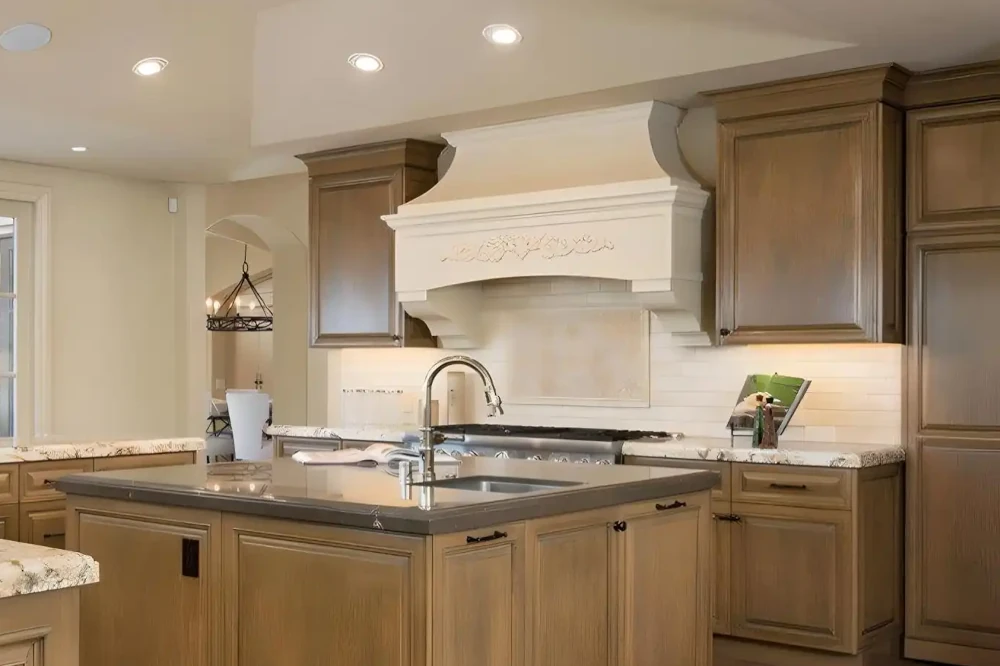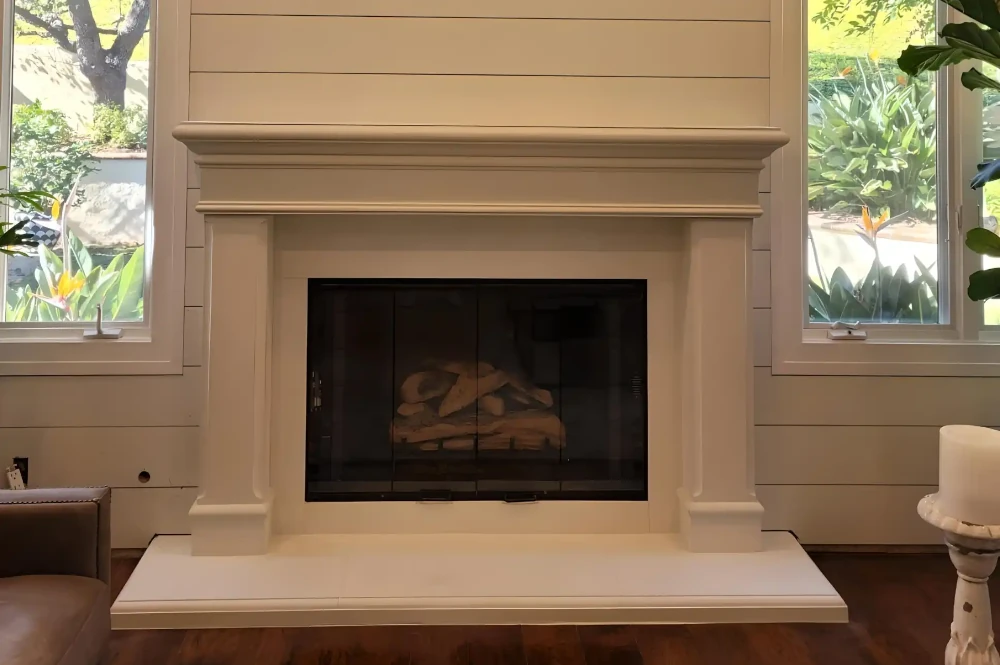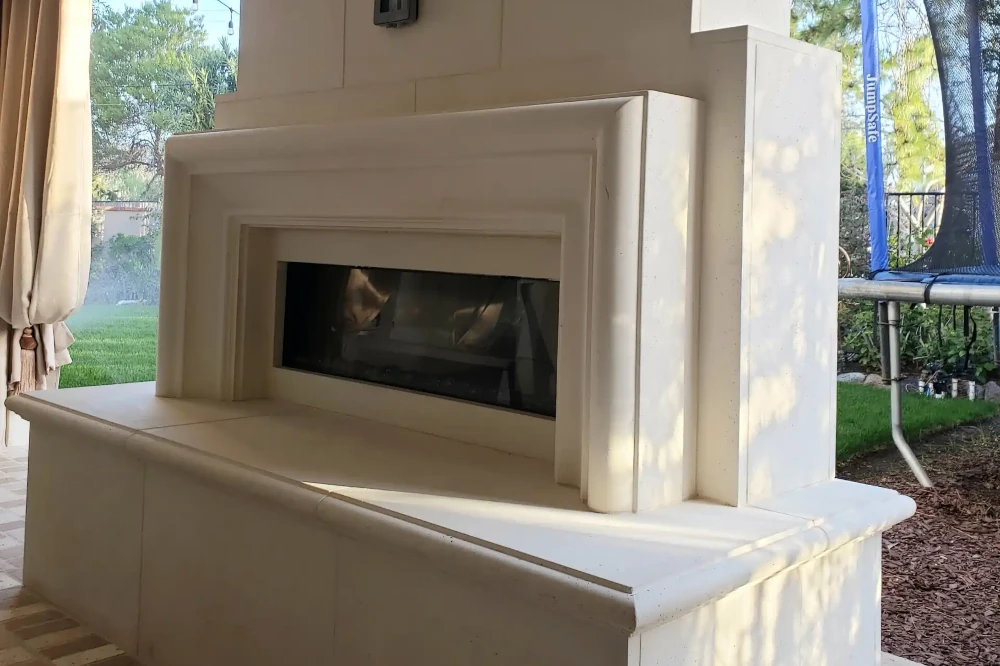Stone hoods for stoves are a popular choice in kitchen design, offering both functional and aesthetic benefits. The type of stone used can greatly influence the overall look, durability, and maintenance requirements of the hood. Here, we’ll explore the various types of stone commonly used in stove hoods, highlighting their unique properties, benefits, and potential drawbacks.
1. Granite
Overview:
Granite is one of the most popular choices for stove hoods due to its exceptional durability and wide range of colors and patterns. This natural stone is formed from volcanic magma, making it incredibly hard and heat-resistant.
Benefits:
- Durability: Granite is resistant to scratches, chips, and heat, making it ideal for the kitchen environment.
- Variety: Available in numerous colors and patterns, granite can complement any kitchen style.
- Low Maintenance: With proper sealing, granite is relatively easy to clean and maintain.
Drawbacks:
- Weight: Granite is heavy, which may require additional support and professional installation.
- Cost: High-quality granite can be expensive, both in terms of the material itself and the installation process.
2. Marble
Overview:
Marble is prized for its elegant and timeless appearance. It has been used in architecture and design for centuries, known for its smooth, polished surface and unique veining.
Benefits:
- Aesthetic Appeal: Marble’s luxurious look adds a touch of sophistication to any kitchen.
- Heat Resistance: Like granite, marble is also heat-resistant, making it suitable for stove hoods.
Drawbacks:
- Porosity: Marble is more porous than granite, which means it can stain more easily if not properly sealed.
- Maintenance: Requires regular sealing and careful cleaning to avoid damage from acidic substances.
3. Soapstone
Overview:
Soapstone is a metamorphic rock composed mainly of talc, which gives it a soft, soapy feel. It is often used in rustic and farmhouse-style kitchens due to its natural, matte appearance.
Benefits:
- Heat Resistance: Soapstone can withstand high temperatures, making it an excellent material for stove hoods.
- Stain Resistance: Unlike marble, soapstone is non-porous and resistant to stains.
- Aging: Soapstone develops a unique patina over time, adding character and charm.
Drawbacks:
- Softness: Soapstone is softer than granite and marble, which makes it more susceptible to scratches and dents.
- Limited Color Options: Typically available in shades of gray, soapstone has fewer color variations.
4. Limestone
Overview:
Limestone is a sedimentary rock with a smooth texture and earthy tones. It is known for its natural, rustic appearance and is often used in traditional and Mediterranean-style kitchens.
Benefits:
- Aesthetic: Limestone offers a warm, inviting look with its neutral colors and subtle patterns.
- Workability: Easier to carve and shape, limestone allows for more intricate designs and custom detailing.
Drawbacks:
- Porosity: Similar to marble, limestone is porous and can stain easily if not sealed properly.
- Durability: Softer than granite and marble, limestone is more prone to scratches and wear.
5. Travertine
Overview:
Travertine is a type of limestone formed in hot springs and caves. It is characterized by its porous surface and earthy tones, making it a popular choice for Mediterranean and rustic designs.
Benefits:
- Unique Texture: The natural pitting and veining in travertine create a distinctive, textured look.
- Heat Resistance: Like other natural stones, travertine is heat-resistant and suitable for stove hoods.
Drawbacks:
- Porosity: Travertine’s porous surface requires regular sealing to prevent staining and damage.
- Maintenance: It needs more frequent maintenance to keep it looking its best.
6. Slate
Overview:
Slate is a metamorphic rock known for its fine-grained texture and layered appearance. It is typically available in darker shades, such as black, gray, and green.
Benefits:
- Durability: Slate is highly durable and resistant to scratches and heat.
- Non-Porous: Less porous than other stones like marble and limestone, slate is more resistant to stains.
Drawbacks:
- Limited Color Range: Slate is mostly available in darker hues, which might not suit all kitchen designs.
- Weight: Similar to granite, slate is heavy and may require additional structural support.
7. Quartzite
Overview:
Quartzite is a hard, metamorphic rock that started as sandstone. Through a process of high heating and pressurization, it transforms into quartzite, known for its strength and resistance to heat.
Benefits:
- Durability: Quartzite is harder than granite and highly resistant to heat and scratches.
- Aesthetic Variety: Available in various colors and patterns, often resembling marble, but with greater durability.
Drawbacks:
- Cost: Quartzite can be expensive, both in terms of material and installation.
- Maintenance: Requires sealing to protect against stains and ensure longevity.
Conclusion
Choosing the right type of stone for a stove hood depends on several factors, including aesthetic preferences, budget, and maintenance considerations. Granite and quartzite are excellent choices for those seeking durability and a wide range of design options. Marble and limestone offer a more classic, elegant look but require more maintenance. Soapstone and slate provide unique textures and colors, suitable for specific styles and designs. Understanding the properties and care requirements of each type of stone can help homeowners and designers make informed decisions that enhance the beauty and functionality of their kitchens.
Visit Studio Design Works – Cast Stone Products for stone hoods for stoves of the highest caliber. You can reach the manufacturer using this form or by phone at (949) 627-5926.
When it comes to home construction and interior design, choosing the right materials can make a significant difference in the overall aesthetic, durability, and cost of a project. Stone has long been a favored material […]
Fireplaces have long been the heart of the home, providing warmth and a gathering place for families and friends. Over the years, the design of fireplaces, particularly the mantels, has evolved significantly. Among the various […]
Modern cast stone has emerged as a popular choice in contemporary architecture and interior design, offering a blend of durability, versatility, and aesthetic appeal. Cast stone, a refined architectural concrete product, can mimic natural stone’s […]
In today’s world, environmental sustainability is a crucial consideration in almost every aspect of life, including home construction and interior design. One area where sustainable choices can make a significant impact is in the selection […]






